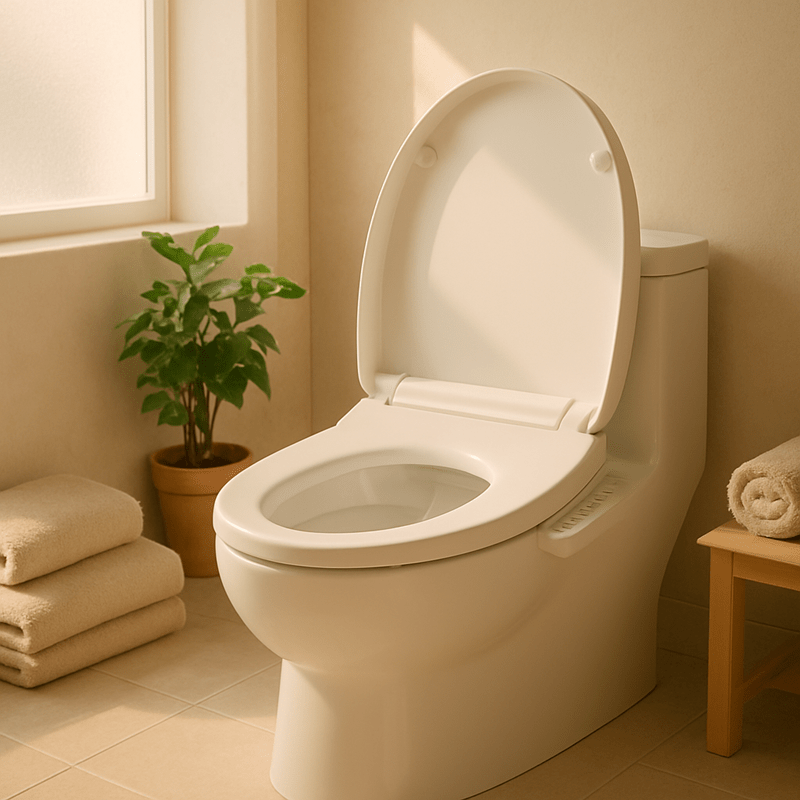
The Basics of Hemorrhoids
Hemorrhoids are a common condition characterized by swollen veins in the lower rectum and anus. They can be classified into two types: internal and external. Internal hemorrhoids develop inside the rectum and are usually painless, but they may cause bleeding. External hemorrhoids appear under the skin around the anus and can be painful or itchy. Factors that contribute to the development of hemorrhoids include straining during bowel movements, sitting for long periods on the toilet, chronic constipation or diarrhea, and a low-fiber diet. Understanding these basics helps in recognizing the significance of preventive measures such as the use of a bidet.
Coway Bidets: Minimalist Design, Maximum Comfort 👆Understanding Bidets
A bidet is a bathroom fixture designed to wash and clean the genital and anal areas. Originating in France in the late 17th century, bidets have gained widespread popularity across Europe, Asia, and increasingly in North America. They come in various forms, including standalone units, attachable devices, and integrated toilet seats. Bidets function by directing a stream of water to cleanse the targeted areas, providing a more hygienic and comfortable experience compared to toilet paper use. The growing interest in bidets is largely due to their potential health benefits, including the prevention of conditions like hemorrhoids.
Starting Your Bidet Journey? Here’s Why Bio Bidet Leads the Way 👆How Bidets Help in Prevention
Reduction of Strain
One of the primary ways bidets help prevent hemorrhoids is by reducing the strain during bowel movements. The gentle water stream of a bidet can help loosen stool, making it easier to pass without excessive straining. This is crucial because straining puts pressure on the veins in the rectum and anus, a leading cause of hemorrhoids. By minimizing this pressure, bidets can play a significant role in prevention.
Enhanced Hygiene
Bidets provide superior hygiene compared to toilet paper alone. The water stream effectively cleanses the anal area, removing any fecal residue that might otherwise irritate the skin and contribute to hemorrhoid formation. Enhanced hygiene reduces the risk of infections and inflammation, further lowering the likelihood of developing hemorrhoids. People with sensitive skin can particularly benefit from the gentle cleaning action of a bidet.
DIY Your Bathroom Upgrade: How Brondell Makes It Easy 👆Scientific Evidence
Several studies have explored the health benefits of bidet use. Research suggests that patients who use bidets report less anal discomfort and irritation compared to those who rely solely on toilet paper. A study published in the Journal of Gastroenterology found that regular bidet use was associated with a significant reduction in hemorrhoid symptoms, including pain and bleeding. These findings indicate that incorporating a bidet into daily hygiene routines can be an effective preventive measure against hemorrhoids.
TOTO Bidet Reviews Are In — Here’s Why Everyone’s Upgrading 👆Comparing With Toilet Paper
Environmental Impact
While toilet paper is a traditional choice for personal hygiene, its environmental impact is considerable. The production of toilet paper requires extensive water and energy resources, and it contributes to deforestation. In contrast, bidets use minimal water and offer a sustainable alternative that reduces toilet paper consumption. This environmental benefit is an added incentive for choosing bidets over conventional methods.
Comfort and Convenience
Bidets offer unparalleled comfort and convenience. Unlike toilet paper, which can be abrasive and irritating, bidets provide a soothing cleansing experience. For individuals with mobility issues or conditions like arthritis, using a bidet can be significantly easier and more comfortable than reaching for toilet paper. The convenience factor is especially noteworthy for those who prioritize both personal hygiene and ease of use.
Coway Bidets: Minimalist Design, Maximum Comfort
Bidet Shopping in America: Which Brands Are Worth It? 👆Bidet Features to Consider
When selecting a bidet, several features can enhance the user experience. Adjustable water pressure and temperature controls allow for a customized and comfortable cleanse. Some bidets also offer air drying, eliminating the need for toilet paper altogether. Advanced models may include additional features such as heated seats, nightlights, and deodorizers. These options can make the transition to using a bidet more appealing and improve overall satisfaction.
Why Coway Bidets Beat Toilet Paper Costs 👆Addressing Common Concerns
Hygiene Worries
Some individuals may have concerns about the hygiene of bidets. However, modern bidets are designed with self-cleaning nozzles and antibacterial materials to ensure sanitary use. Regular maintenance and cleaning can further alleviate any worries, ensuring that bidets remain a hygienic option for personal care.
Installation and Cost
Concerns about installation and cost are common barriers to bidet adoption. While standalone bidet units may require professional installation, many attachable bidet devices are simple to install without specialized tools. Additionally, a wide range of price points makes bidets accessible to various budgets. The long-term savings on toilet paper can offset the initial cost, making bidets a cost-effective choice in the long run.
Living with a Coway Bidet for 30 Days 👆Real-Life Examples
Consider the case of John, a middle-aged office worker who struggled with recurring hemorrhoids due to long hours of sitting and a low-fiber diet. After switching to a bidet, John noticed a significant reduction in his symptoms. The gentle cleansing helped alleviate irritation, and the reduction in strain during bowel movements contributed to his overall comfort. Stories like John’s highlight the practical benefits and potential of bidets in hemorrhoid prevention.
Comparing Coway’s Most Popular Bidet Models in the U.S. 👆Conclusion: Embracing Bidets
Bidets offer a promising solution for hemorrhoid prevention by promoting better hygiene, reducing strain, and providing comfort. With scientific evidence supporting their benefits and a growing range of accessible options, bidets present an appealing choice for those seeking to enhance their personal care routine. Embracing bidets not only supports individual health but also contributes to environmental sustainability. As awareness continues to grow, more individuals may find bidets to be an invaluable tool in preventing and managing hemorrhoids.
Related Posts: Coway Bidets: Minimalist Design, Maximum Comfort
How Korean Bidet Brand Coway Conquered the World 👆